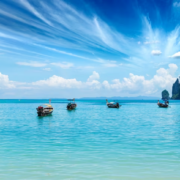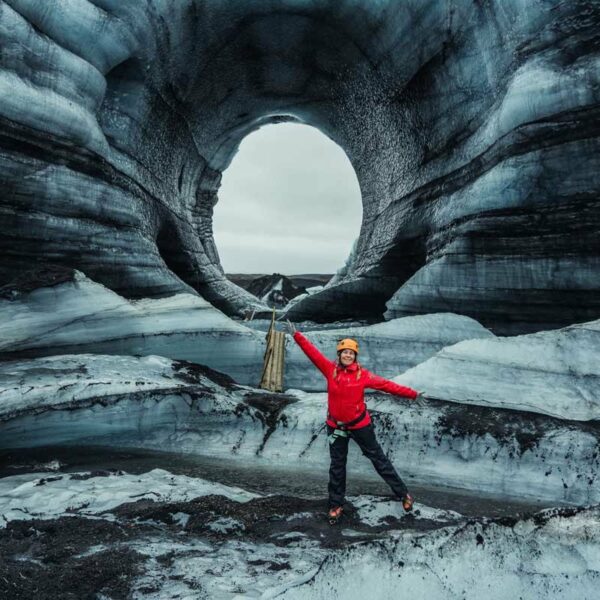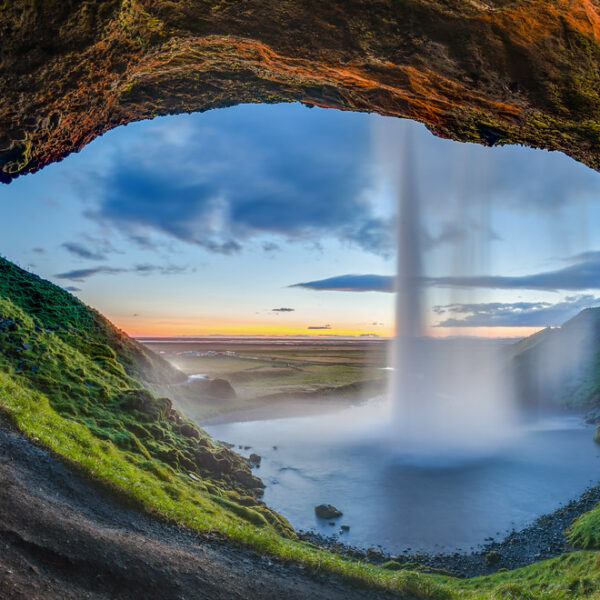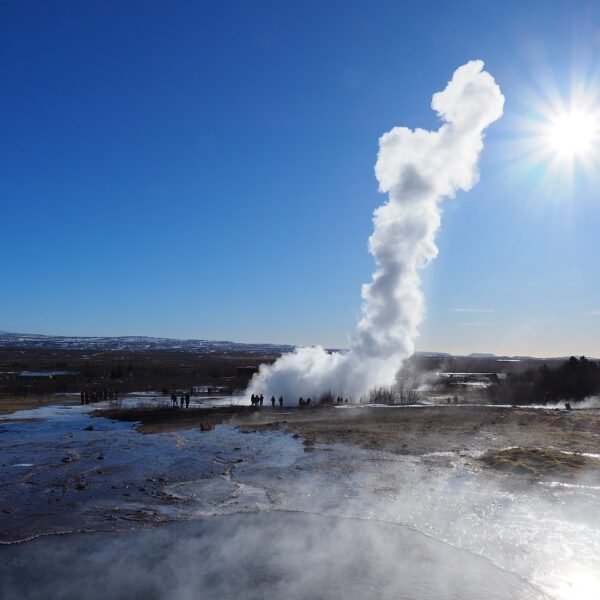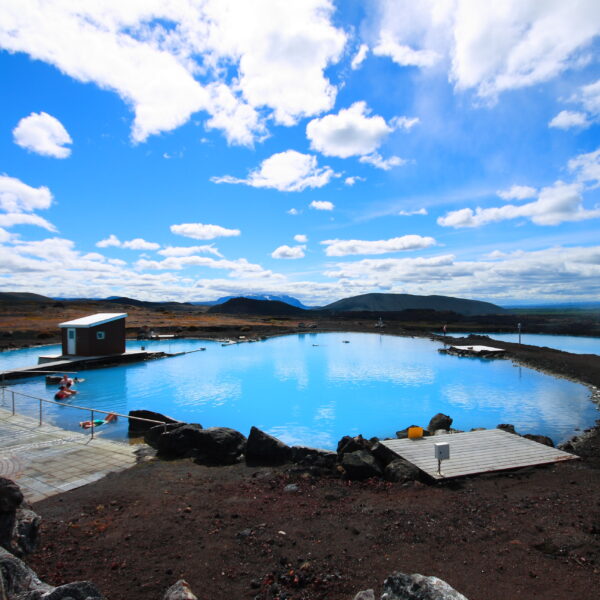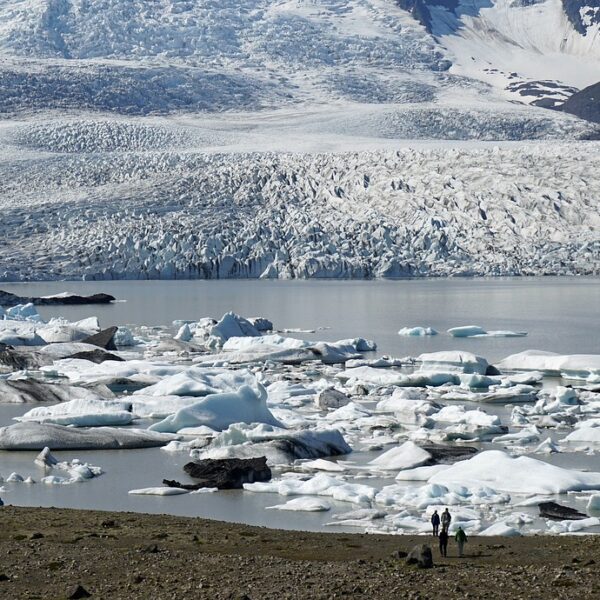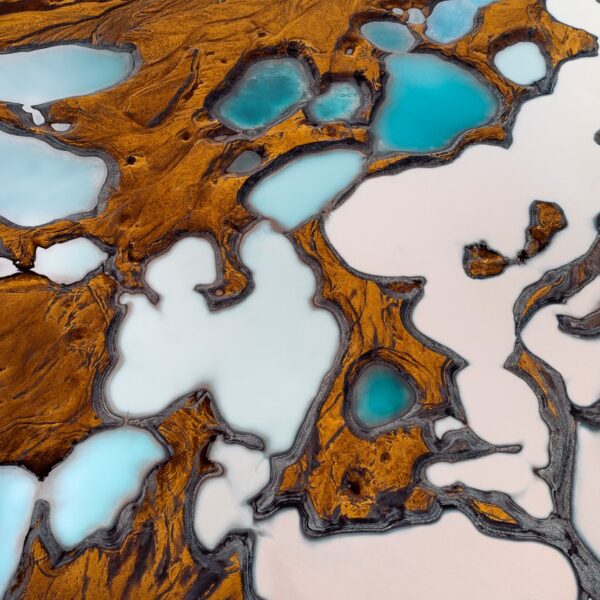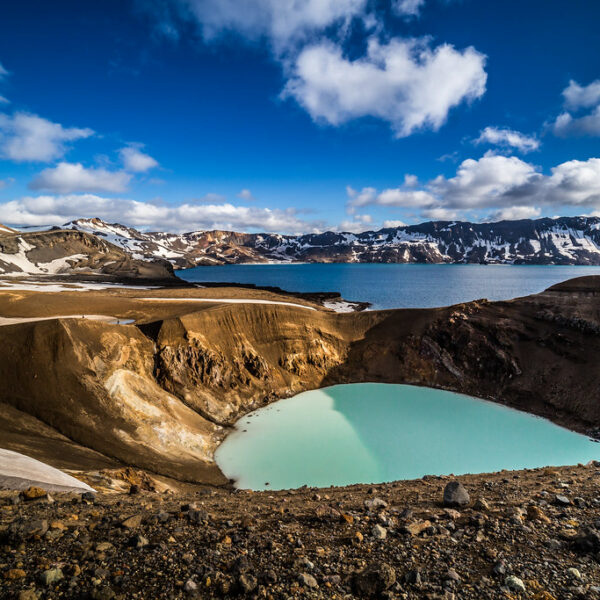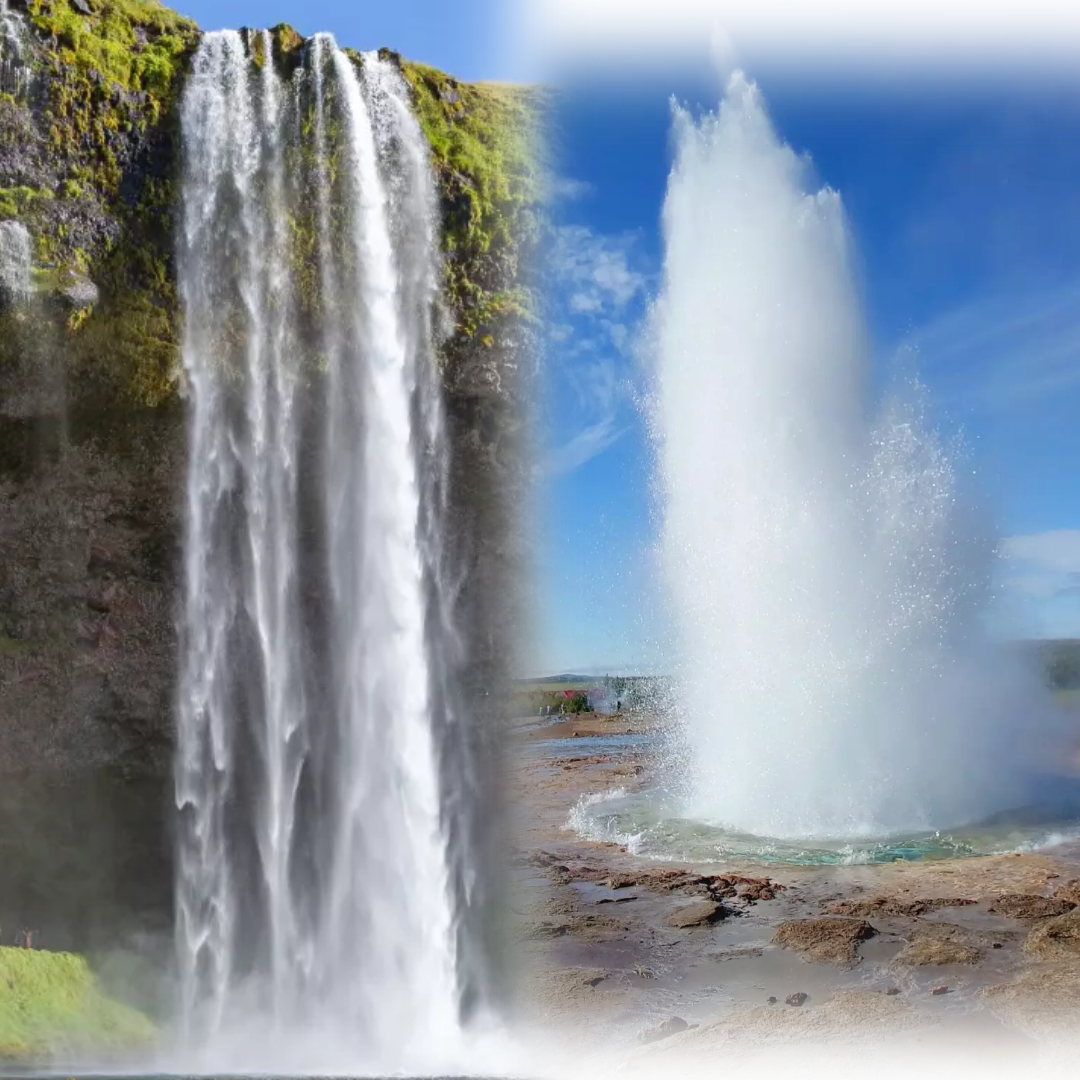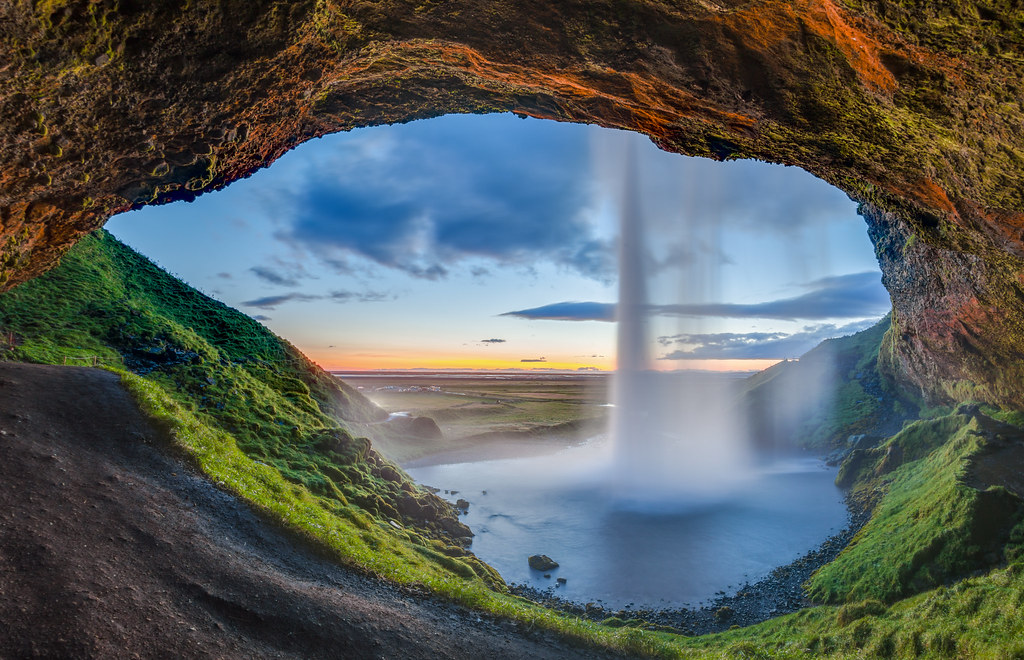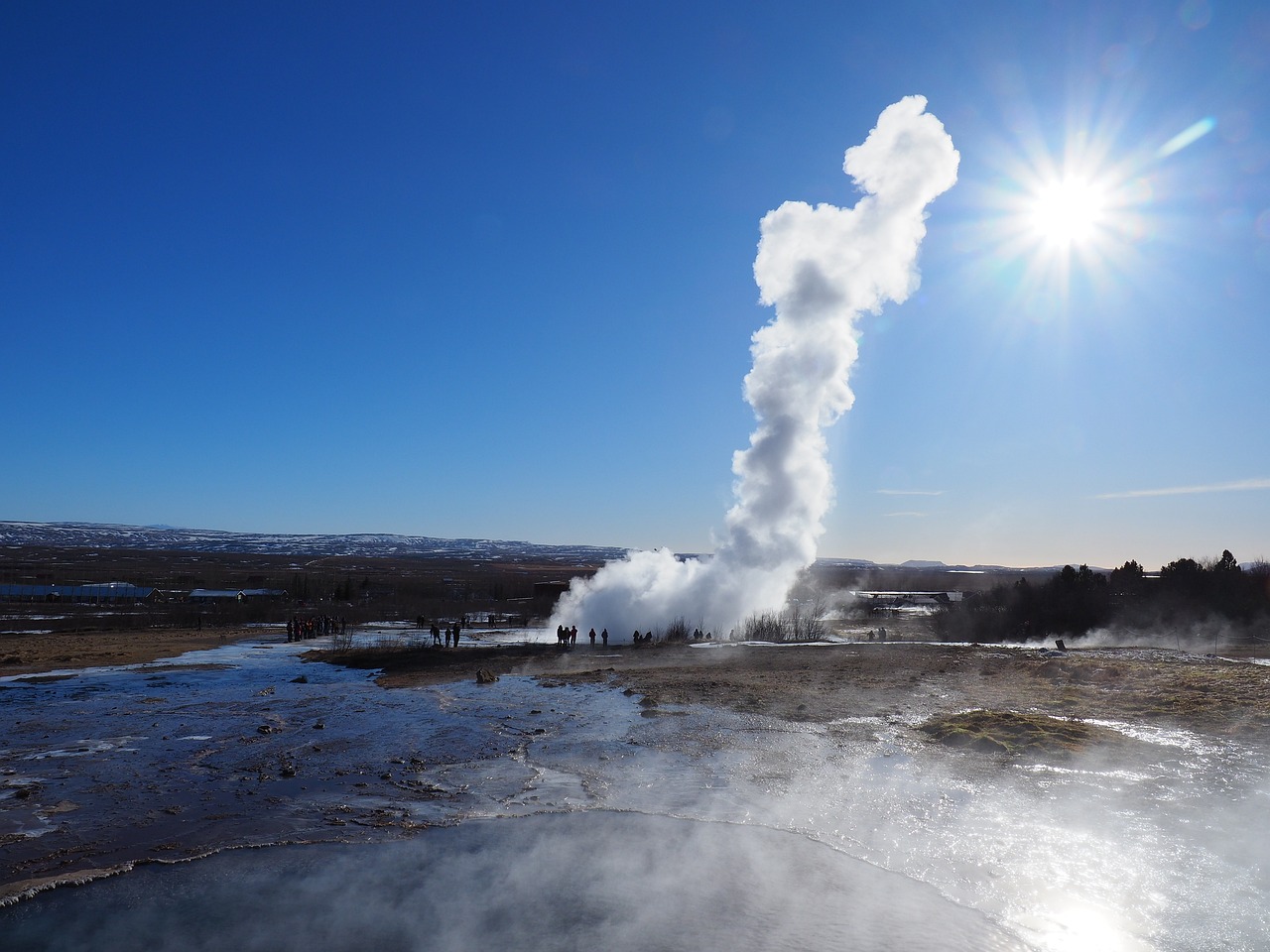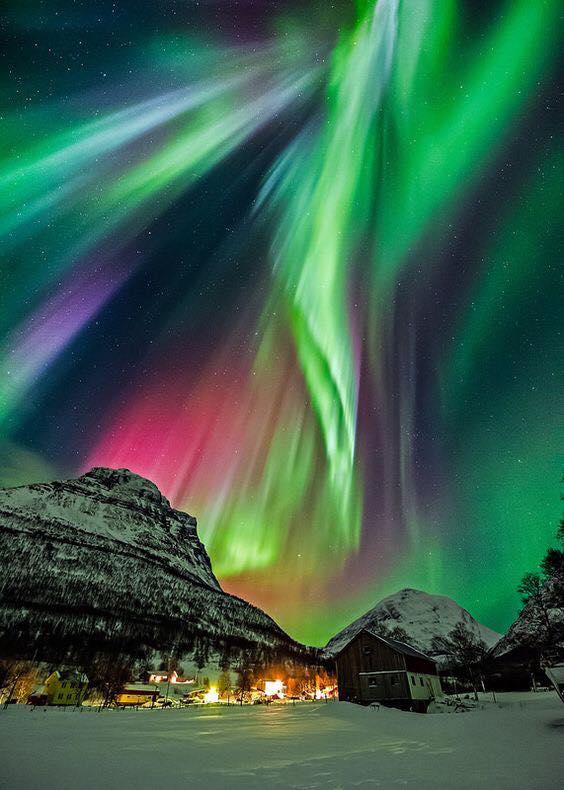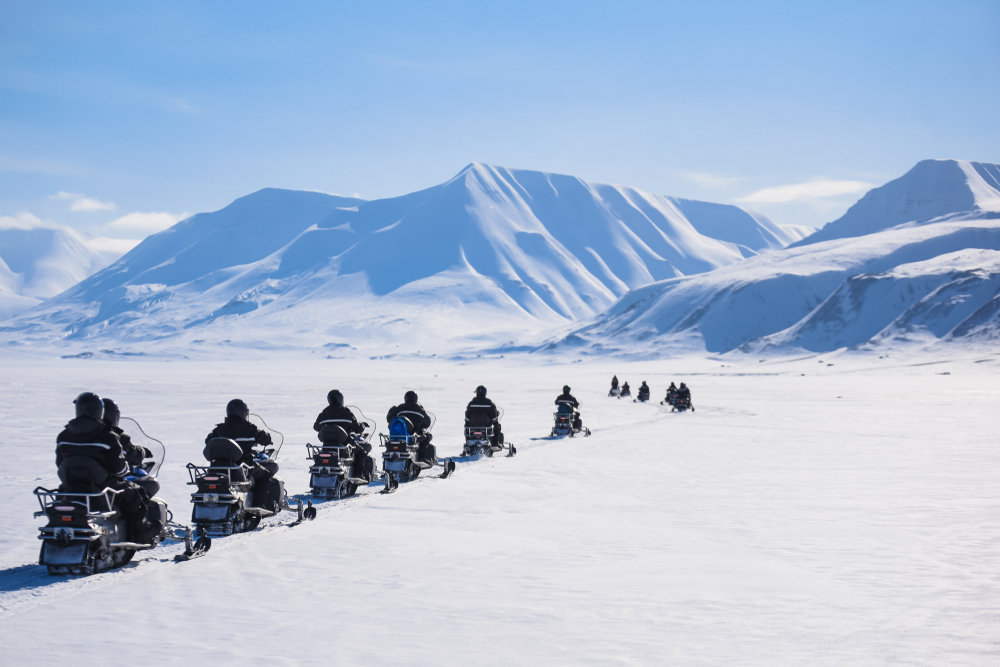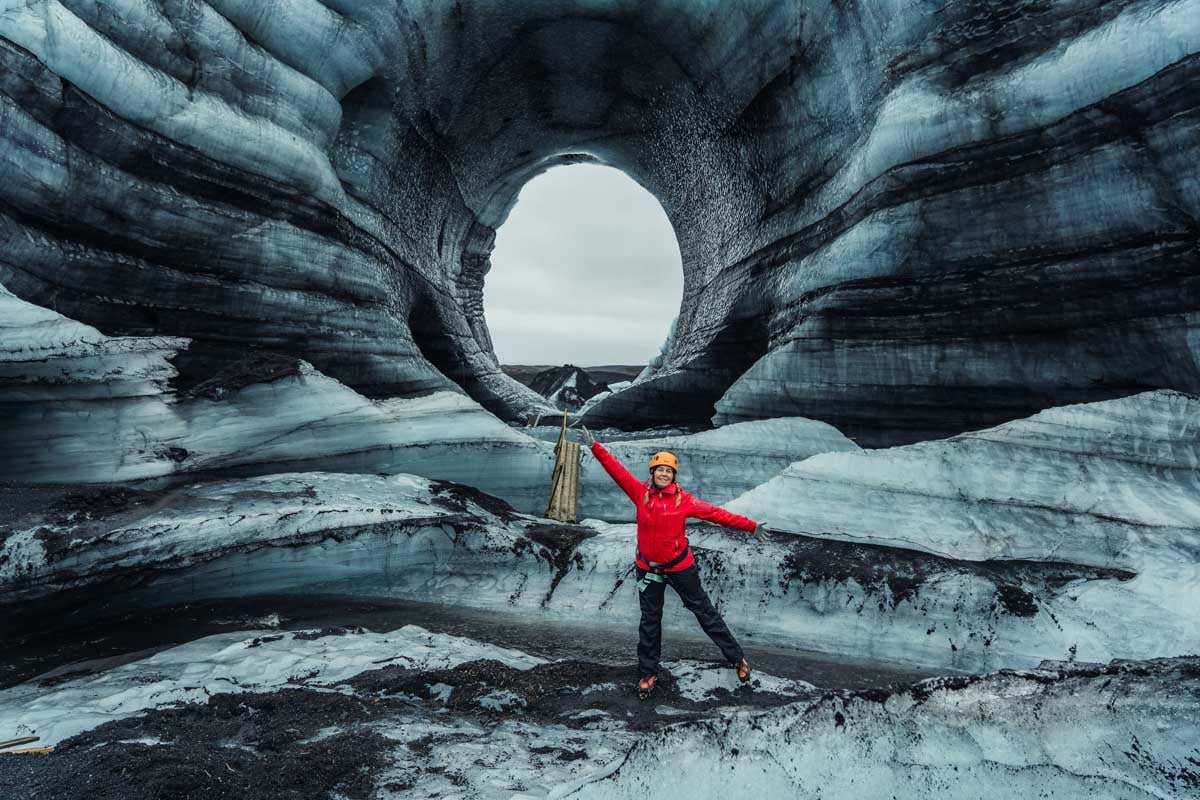Iceland Weather: What You Need to Know Before You Go
Imagine standing under the dancing Northern Lights, being mesmerized by the sounds of waterfalls, or discovering glaciers that seem to go on forever. Each of these things is closely tied to the way the Iceland weather changes.
In this complete guide to Iceland’s weather, we will explain how the Iceland weather changes, give you important packing advice, show you the best weather-related sites and activities, and make sure you stay safe no matter what Mother Nature throws at you.
So, if you like nature, want to try new things, or are just interested in traveling, come with us on this trip through the fascinating world of Iceland’s weather. Get ready to learn the secrets of Iceland’s weather and go on a trip you will never forget, where every moment is shaped by the weather.
Are you ready to feel the magic of the weather in Iceland? Let’s jump in and see what wonderful things we can find. Join Tourism Iceland in this amazing venture to live the holiday you have been dreaming about.
Iceland Weather Overview
The fact that Iceland is close to the Arctic Circle has a big effect on its weather. Because the North Atlantic Current cools and warms the water, the country has cool summers and mild winters. Iceland has average temperatures of 0°C (32°F) in the winter and 15°C (59°F) in the summer.
But it’s important to remember that the weather can change a lot from one day to the next. Iceland also gets a lot of rain and snow throughout the year, but rain is more common than snow. Especially near the coast, the winds that blow most of the time can be strong and powerful.
Iceland Temperature Graph by Month
| Month | Avg. High | Avg. Low | Avg. Rainfall | Avg. Sunlight | |
| January | 36 F (2 C) | 28 F (minus 2) | 4 inches | 5 hours | |
| February | 36 F (2 C) | 28 F (minus 2 C) | 4.3 inches | 8 hours | |
| March | 38 F (3 C) | 30 F (minus 1) | 3.7 inches | 12 hours | |
| April | 43 F (2 C) | 34 F (1 C) | 2.9inches | 16 hours | |
| May | 48 F (6 C) | 40 F (4 C) | 3 inches | 18 hours | |
| June | 54 F (12 C) | 46 F (8 C) | 2.1 inches | 21 hours | |
| July | 57 F (14 C) | 49 F (9 C) | 2.7 inches | 19 hours | |
| August | 55 F (13 C) | 47 F (8 C) | 3.5 inches | 16 hours | |
| September | 50 F (10 C) | 42 F (6 C) | 4.6 inches | 13 hours | |
| October | 44 F (4 C) | 36 F (2 C) | 4.5 inches | 9 hours | |
| November | 39 F (4 C) | 30 F (minus 1 C) | 4.2 inches | 6 hours | |
| December | 36 F (2 C) | 29 F (minus 2 C) | 4.1 inches | 4 hours | |
Seasons in Iceland
Iceland has four distinct seasons, each offering its own unique charm and weather conditions.
Iceland Weather In Summer
During the summer (June to August), Iceland has a lot of bright hours, and the northern parts of the country experience the midnight sun. This means that there will be almost 24 hours of daylight, giving you plenty of time to explore and go on adventures. It is the hottest time to visit Iceland, with average temperatures between 10°C (50°F) and 15°C (59°F).
Landscapes with lots of green grass, plants in bloom, and birds flying around make a beautiful setting for outdoor activities. It’s the best time to hike through beautiful hills, find secret rivers, and take epic road trips along the famous Ring Road.
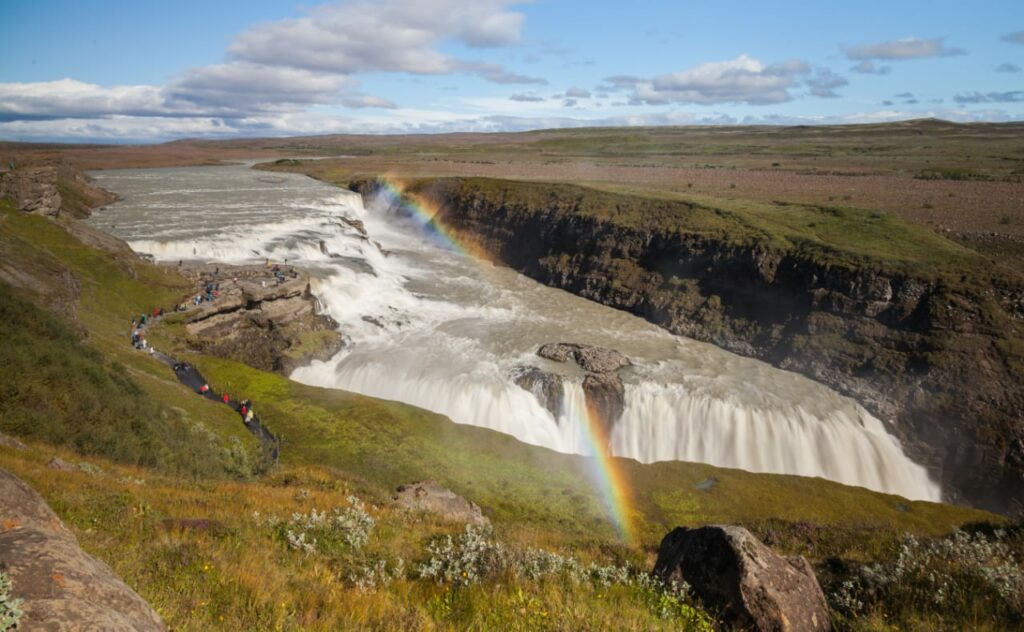
Iceland Weather In Spring
Spring in Iceland lasts from March to May. It is a time of change as the country comes out of winter. Temperatures gradually rise from 0°C (32°F) to 8°C (46°F), and the days get longer, giving you more time to enjoy the outdoors.
When spring comes to Iceland, the landscapes start to wake up after being asleep all winter. As the snow melts, it forms rushing streams, and where the ground used to be ice, it becomes a blanket of colorful wildflowers.
It’s a great time to see the beautiful scenery of the country come to life with bright colors. Spring is also a good time to visit ice caves before they melt away fully, so you can get a close look at the complex ice patterns.
Iceland Weather In Autumn
Autumn, which lasts from September to November, is known for its beautiful leaves and cooler weather. The normal temperature is between 5°C (41°F) and 10°C (50°F), which makes the air feel crisp and pleasant. It’s a great time to go hiking in Iceland and see how the colors change in the countryside.
The scenery is painted with bright colors like red, orange, and gold, making it a beautiful place to take pictures and do outdoor activities. Autumn is also known for its extreme weather changes, so be ready for sudden rain showers and strong winds.
Even though the weather is changing, fall is a great time to see Iceland’s natural wonders because there are fewer people there. This makes for a more peaceful and private experience.
Iceland Weather In Winter
During Iceland’s winter, which lasts from December to February, the days are shorter, and it’s colder. The normal temperature is between -3°C (27°F) and 2°C (36°F), but it can sometimes drop even lower in some areas.
Winter is the best time to see the beautiful Northern Lights because the nights are longer and the sky is clearer. The moving green, pink, and purple lights across the dark Arctic sky make for a truly magical sight.
Along with looking for the Northern Lights, winter in Iceland is full of exciting things to do in the snow. You can check out the beautiful blue ice patterns in ice caves, ride a snowmobile on a glacier or even try your hand at ice fishing. For these adventures in the winter wonderland, just make sure to wear warm clothes and follow safety rules.

Packing Tips for Different Iceland Weather
To make the most of your Iceland adventure, it’s crucial to pack appropriate clothing and gear for the ever-changing weather conditions.
- Clothing: Dressing in layers is key. You should pack thermal base layers, moisture-wicking clothing, fleece jackets, waterproof outer shells, warm hats, gloves, and scarves. Don’t forget to bring a swimsuit for the unique geothermal hot springs.
- Footwear: Sturdy, waterproof footwear is essential. Get yourself hiking boots or waterproof shoes that provide good traction and support.
- Essentials: Pack a waterproof backpack, a reusable water bottle, sunscreen, sunglasses, and a travel umbrella. It’s also wise to have a portable charger and a waterproof phone case to stay connected and capture stunning moments.
Weather-Related Attractions and Activities
Iceland’s diverse weather offers a multitude of attractions and activities worth experiencing.
Storm Watching
Iceland’s weather is wild and exciting, which makes it a great place to watch storms. When it storms, especially in the autumn and winter, you can see how powerful nature is as strong winds whip up the ocean waves and clouds roll across the sky.
From the ocean, you can see amazing things, like the black sand beach at Reynisfjara or the steep rocks at Dyrhólaey. However, it’s important to put safety first and stay away from the ocean when there are storms.

Northern Lights
The winter months are the best time to see the beautiful Northern Lights. When charged particles from the sun hit the Earth’s atmosphere, these mesmerizing natural light shows happen. Winter nights are clear and dark, making it easy to see the dancing green, pink, and purple colors of the aurora borealis.
Join a guided tour in a remote area with little light pollution to see a show you’ll never forget. Remember to wear warm clothes and bring a tripod if you want to take beautiful pictures of this celestial event.
Glaciers
Some of Europe’s biggest glaciers, like Vatnajokull and Langjokull, are in Iceland. It’s a great journey to explore these icy wonders. Join a glacier hike or ice climbing tour led by experts who will make sure you have the right gear and know how to stay safe.
Glaciers have blue ice shapes, cracks, and ice caves that are amazing to look at. You can do these things all year long, but make sure to ask the people who run them about the best weather conditions and safety measures.
Waterfalls
Iceland is known for its many beautiful waterfalls that flow down from the rough terrain. Each waterfall is different, whether it’s the powerful Gullfoss, the beautiful Seljalandsfoss with its road behind the falls, or the strong Skógafoss.
If you want to get close to the falling water and feel its power, you should be ready for mist and rain when you visit these natural wonders. Some waterfalls, like Seljalandsfoss, are lit up at night, which makes for a magical experience that you shouldn’t miss.
Hot Springs and Geothermal Pools
Iceland is known for its geothermal activity, which makes hot springs and geothermal pools all over the country. The Blue Lagoon, a geothermal spa with warm, mineral-rich water, is one of the most well-known geothermal sites.
It is surrounded by volcanic scenery. It’s a favorite place to unwind and feel better. There are also a number of natural hot springs tucked away in quiet, out-of-the-way places that offer a more peaceful, off-the-beaten-path experience. Before getting into a hot spring or geothermal pool, make sure to check the temperature and safety rules.
Bird Watching
Iceland is a haven for bird enthusiasts, especially during the summer months when millions of migratory birds flock to the country’s shores. Puffins, Arctic terns, guillemots, and various species of gulls can be spotted nesting in the coastal cliffs and cliffside.
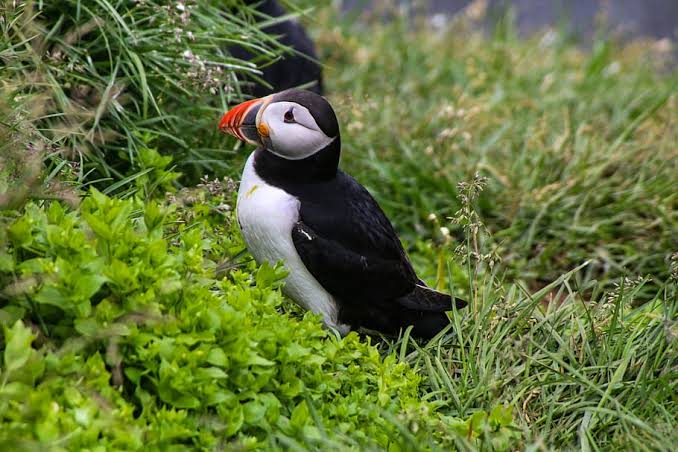
Safety Tips for Challenging Weather
Iceland’s weather can sometimes pose challenges, but with proper precautions, you can ensure a safe journey.
- Storms: Stay informed about weather forecasts and avoid traveling during severe storms. Seek shelter in designated areas if necessary.
- Road Conditions: Check road conditions and closures regularly, especially during winter. Drive cautiously, follow local regulations, and consider renting a 4×4 vehicle for better traction on icy or gravel roads.
- Precautions: Dress warmly, wear appropriate footwear, and carry emergency supplies like food, water, and blankets when venturing into remote areas. Inform someone about your travel plans and always carry a charged mobile phone.
Conclusion
In conclusion, understanding Iceland’s weather is crucial for a successful and enjoyable trip. From the varying temperatures and precipitation levels to the unique experiences each season offers, Iceland’s weather is an integral part of its allure.
By packing appropriately, embracing weather-related attractions, and prioritizing safety, you can fully immerse yourself in the beauty of this remarkable country. Plan your itinerary wisely, be prepared for the unexpected, and get ready to create memories that will last a lifetime.



